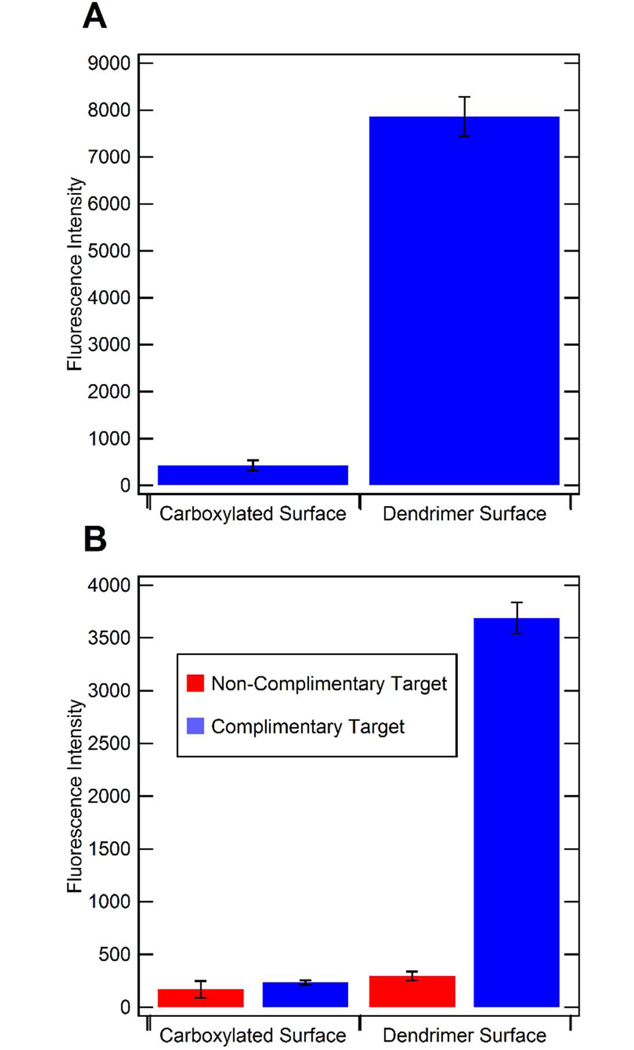Figure 2.
Comparison of oligo(dT)25 immobilization efficiency and oligo(dA)25 capture efficiency by oligo(dT)25 on carboxylated channel surfaces and dendrimer-modified channel surfaces. Fluroescently-labelled oligo(dT)25 was immobilized on carboxylated surfaces containing no dendrimers and dendrimer-modified surfaces, and the fluorescence intensities were compared for the different surfaces (A). Fluorescently-labelled oligo(dA)25 (complimentary target) was captured on both carboxylated and dendrimer-modified surfaces with immobilized oligo(dT)25 capture probes, and the fluorescence was quantified (B: blue bars). Fluorescent oligo(dT)25 (non-complimentary target) was also pumped through both of these channels to determine the non-specific binding to each type of surface (B: red bars).

